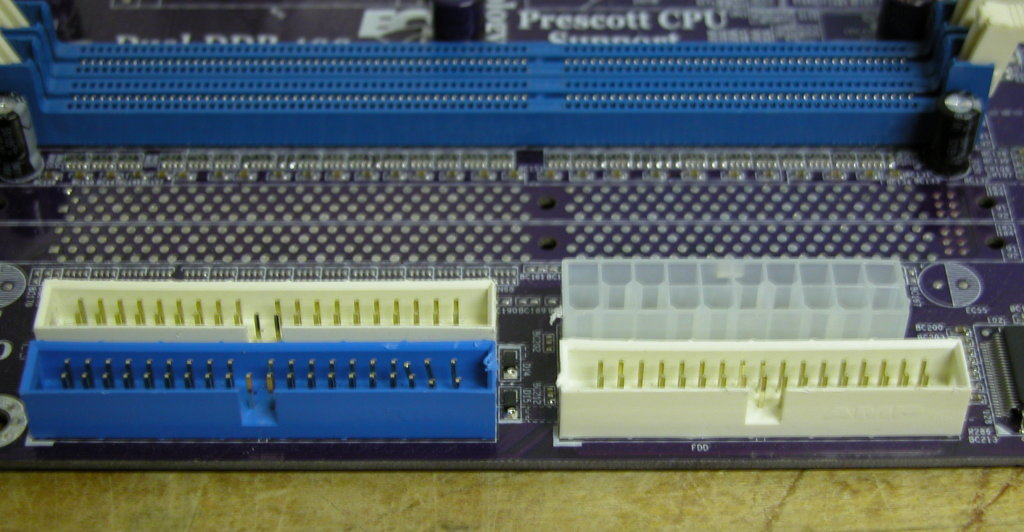Motherboard ID
MOTHERBOARD CONNECTIONS
Objective: Be able to find connectors and objects on the motherboard that are inportant in the build process
The motherboard in your computer system is VERY well-connected - it has communication lines running every which way. This is a brief description of the common connectors that you will see on a motherboard.
On-board Cluster
- Keyboard connector
- AT - large 5-pin
- PS/2 - small
- Mouse connector
- Printer plug
- Sound ports
- Ethernet (RJ45)
- USBs
- And others, and not necessarily all of the above
Capacitors and BLOWN CAPS
The capacitors or caps on the motherboard are able to store small amounts of electrical charge within for use at times when there is a sudden power flucuation on the board from one of the devices. If they become overloaded, they puff up on top and so can be identified as blown. The motherboard may continue to function for awhile with a blown cap but it will soon break down, so Free Geek will not build a system if there is a blown cap present.
See examples C2, C4 and C7
ZIF socket or processor slot
The Central Processing Unit socket lies flat on the motherboard and the gold pins on the CPU fit down into its holes, with its heat sink and fan on top. ZIF stands for Zero Insertion Force, the amount of force that is acceptable when sliding the pins back into their holes.
See example C2
The slot processor stands up sideways on the motherboard in a slot that looks similar to a card slot. The Pentium II and early Pentium III processors are this type, but noone is manufacturing them any more. It too has a heat sink and fan attached to the side to keep the CPU from overheating.
See example C3
Drive connectors
IDE
SATA (Serial ATA)
SCSI
Optical drives such as CD and DVD
Floppy
Bridges and communication facilitators
Northbridge
Southbridge
AMR (Audio/Modem Riser, CNR (Communications and Networking Riser), ACR (Advanced Communications Riser)
HDMR (High Definition Multimedia Riser) and related expansion card and slot types
Exercises
What type of keyboard connector does it have?
Does it have both IDE and SATA hard drive connectors?
See how many blown caps can you spot on the sample board.
